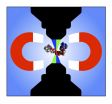"Adults consume approximately 500 additional calories during late-night hours when they are sleep restricted," said the study's senior author David F. Dinges, PhD, director of the Unit for Experimental Psychiatry and chief of the division of Sleep and Chronobiology. "Our research found that refraining from late-night calories helps prevent some of the decline those individuals may otherwise experience in neurobehavioral performance during sleep restriction."
The study (Abstract #0317) gave 44 subjects, ages 21 to 50, unlimited access to food and drink during the day, followed by only four hours of sleep each night for three nights. On the fourth night, 20 participants received continued access to food and drinks, while the 24 others were allowed only to consume water from 10:00 p.m. until they went to sleep at 4:00 a.m.
At 2 a.m. each night, all subjects completed a variety of tests to measure their working memory, cognitive skills, sleepiness, stress level and mood.
During the fourth night, subjects who fasted performed better on reaction time and attention lapses than subjects who had eaten during those late-night hours. In addition, subjects who ate showed significantly slower reaction times and more attention lapses on the fourth night of sleep restriction compared to the first three nights whereas study subjects who had fasted did not show this performance decline.
While countless studies associate numerous physical and mental health benefits with a healthy night's sleep, the Centers for Disease Control Prevention reports that "insufficient sleep is a public health epidemic" in the United States, including the estimated 50 to 70 million U.S. adults suffering from sleep and wakefulness disorders.
The new study results serve as a book end to other research on the links between eating and sleep deprivation. A 2013 study from the same Penn team found that individuals with late bedtimes and chronic sleep restriction may be more susceptible to weight gain due to the increased consumption of calories during late-night hours.
The research team also includes Andrea Spaeth, PhD, and Namni Goel, PhD.
The study was supported by the National Institutes of Health (R01 NR004281, F31 AG044102); the Penn Clinical and Translational Research Center (UL1RR024134); and the Department of the Navy, Office of Naval Research (Award No. N00014-11-1-0361).
In a related study (Abstract #0332), the same team of Goel, Spaeth and Dinges, found that adults who are chronically sleep restricted may need to compensate for decreased morning resting metabolic rate by reducing caloric intake or increasing physical activity to prevent weight gain. That research was led by senior author Namni Goel, PhD, a research associate professor of psychology in Psychiatry and the Unit for Experimental Psychiatry.
"Short sleep duration is a significant risk factor for weight gain and obesity, particularly in African Americans and men," Goel said. "This research suggests that reducing the number of calories consumed can help prevent that weight gain and some of the health issues associated with obesity in Caucasians and particularly in African Americans."
The NIH reports that 69 percent of U.S. adults are overweight or obese. Being overweight or obese increases your risk of coronary heart disease, high blood pressure, stroke, type 2 diabetes, cancer, sleep apnea, and other health problems.
In the study, 36 healthy adults, ages 21 to 50, slept for their usual amount for two nights. Next, they spent four hours in bed each night for five nights, followed by one night of 12 hours of recovery sleep. The control group of 11 subjects received 10 hours in bed each night for six nights. Resting metabolic rate, or measure of the amount of energy used in a relaxed condition, and respiratory quotient, or the ratio of the volume of carbon dioxide to oxygen used in a time period, were measured after overnight fasting.
In the experimental group, resting metabolic rate decreased after five nights of sleep restriction and returned to baseline levels after recovery sleep. No changes in resting metabolic rate were observed in control subjects. In the experimental group, African Americans exhibited comparable daily caloric intake relative to Caucasians, but a lower resting metabolic rate and higher respiratory quotient.
INFORMATION:
The study was supported by National Institutes of Health (R01 NR004281, F31 AG044102); the Penn Clinical Translational Research Center (UL1RR024134); and the Department of the Navy, Office of Naval Research (Award No. N00014-11-1-0361).
The team will present their findings at SLEEP 2015, the 29th annual meeting of the Associated Professional Sleep Societies LLC; #0317 on Sunday, June 7, 2015 at 4:45-5:00 p.m. in Room 6E, and #0332 during the poster session 4-6 p.m. on Monday, June 8. Penn Medicine News from Sleep 2015 is available online at http://www.uphs.upenn.edu/news/.
Abstract #0317 is supported by NIH R01 NR004281, F31 AG044102; CTRC UL1RR024134; Department of the Navy, Office of Naval Research (Award No. N00014-11-1-0361) and abstract #0332 is supported by NIH R01 NR004281, F31 AG044102; CTRC UL1RR024134; Department of the Navy, Office of Naval Research (Award No. N00014-11-1-0361).
Disclosure: Dinges is compensated by the Associated Professional Sleep Societies, LLC, for serving as Editor and Chief of SLEEP.
Penn Medicine is one of the world's leading academic medical centers, dedicated to the related missions of medical education, biomedical research, and excellence in patient care. Penn Medicine consists of the Raymond and Ruth Perelman School of Medicine at the University of Pennsylvania (founded in 1765 as the nation's first medical school) and the University of Pennsylvania Health System, which together form a $4.9 billion enterprise.
The Perelman School of Medicine has been ranked among the top five medical schools in the United States for the past 17 years, according to U.S. News & World Report's survey of research-oriented medical schools. The School is consistently among the nation's top recipients of funding from the National Institutes of Health, with $409 million awarded in the 2014 fiscal year.
The University of Pennsylvania Health System's patient care facilities include: The Hospital of the University of Pennsylvania -- recognized as one of the nation's top "Honor Roll" hospitals by U.S. News & World Report; Penn Presbyterian Medical Center; Chester County Hospital; Penn Wissahickon Hospice; and Pennsylvania Hospital -- the nation's first hospital, founded in 1751. Additional affiliated inpatient care facilities and services throughout the Philadelphia region include Chestnut Hill Hospital and Good Shepherd Penn Partners, a partnership between Good Shepherd Rehabilitation Network and Penn Medicine.
Penn Medicine is committed to improving lives and health through a variety of community-based programs and activities. In fiscal year 2014, Penn Medicine provided $771 million to benefit our community.


